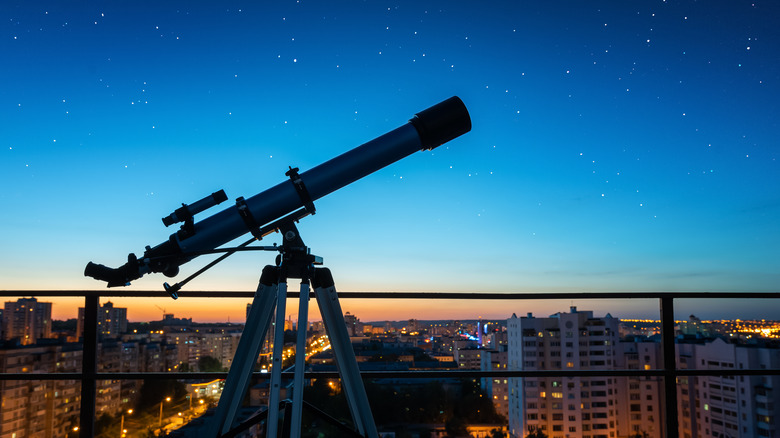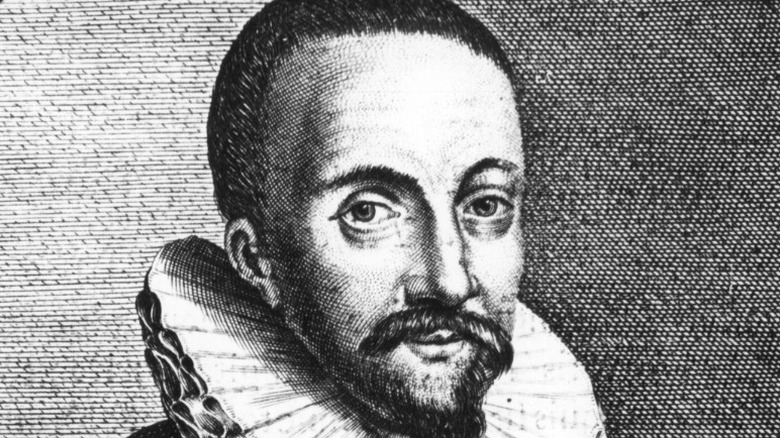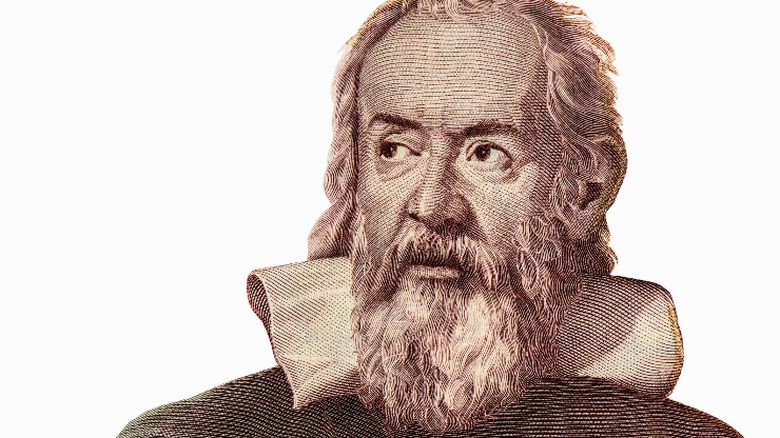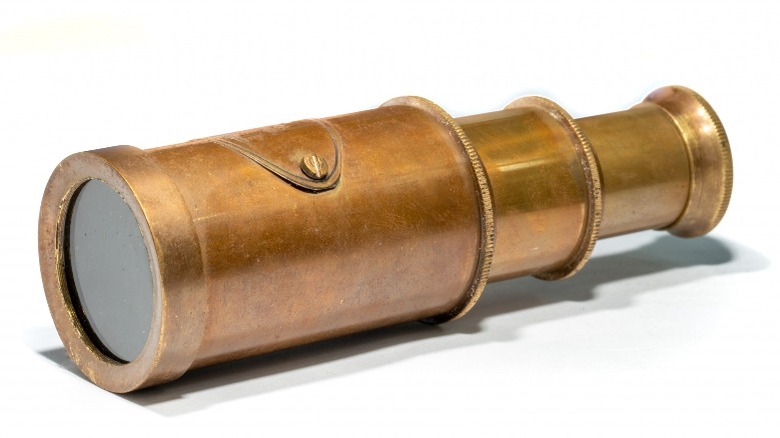Who Created The Telescope And Why Was It Invented?
We use items every day of our lives without knowing that some of them have origins that took root centuries ago. Whether it's the clock on our living room wall or the engine under the hood of our car, there is some pretty amazing history behind the origin of the objects we rely on. With something as old as the telescope, you can be sure that there is an interesting story behind how this astronomical instrument came to be.
Those with a rudimentary understanding of history might claim that it was Galileo Galilei who invented this device. After all, he was just as well known for his inventions as he was for his search of the night sky. But in fact, while Galileo was one to improve the telescope, he was not credited for actually inventing it (per Explaining Science). That honor has been given to another European, who may have invented this star gazing device after making a chance observation one day in his glass workshop.
Hans Lippershey gets credit for the telescope
While there are several stories behind how the telescope came to be, the most settled upon one involves Dutch glassmaker Hans Lippershey in the 17th century (via Space.com). Glassmakers had been experimenting with glass lenses inside of tubes since the early 1400s. But as these lenses were not very powerful and remained unpolished, they weren't great at magnification. Even though they could make distant objects appear bigger, they weren't suitable for stargazing by a long shot. By the end of the 16th century, however, the lenses were becoming much better made and more suitable for magnification.
One day in 1608, Lippershey was in his shop working when he began to notice that two young boys were playing with some of the lenses. The story goes, according to Space, that the boys put two lenses together and were able to make a distant weathervane look bigger. This inspired Lippershey to begin experimenting with different lenses, before finally setting a concave eyepiece paired with a convex objective lens.
Nine Planets tells us that Lippershey "put a mask on his telescope that only allowed a small amount of light to enter. When he reduced the amount of light and focused it, the images became clear but remained dim." He was the first to do this, thus getting credit as the inventor who kickstarted the evolution of the telescope.
Galileo improved on Lippershey's invention
When he felt comfortable with his prototype, Hans Lippershey took his telescope to the Prince of Nassau (via Nine Planets). Lippershey then applied for a patent for his invention. According to Britannica, he applied to the States-General for either a 30-year patent or an annual pension, the condition being that he would not share his discoveries with any foreign leaders.
But two other inventors came forward and claimed that they had also invented the same style of the telescope, which resulted in the patent being denied. The States-General reasoned that not only was it impossible to determine who had developed it first, but that too many individuals already knew about it, and it was also terribly easy to replicate. The States-General did give Lippershey 900 florins for his telescope, under the condition that it be transformed into a binocular device.
By the end of 1608, King Henry IV of France had been given one of Lippershey's new devices. This caught the attention of French astronomer Jacques Bovedere, who penned a letter to his colleague Galileo Galilei about the instrument. Belvedere discussed the possibilities of such a device being further modified to study the night sky (via The Biography).
Galileo was able to produce his own, and it's thought that his telescope was the first one to observe the heavens. Over the next several decades, he and other astronomers continued to improve upon Lippershey's telescope, increasing the magnification and improving the clarity.
Competing patents
So, who else laid claim to the telescope when Hans Lippershey was applying for his patent? Fellow glassmaker Zacharias Jansen has been credited with this invention as well. Jansen and Lippershey were from the same town in the Netherlands and were known to one another. Janson claimed that Lippershey stole his idea, though this was never proven, according to Space.com. Jansen was credited for using glass lenses in a similar manner, however. According to Live Science, he is considered the inventor of the microscope.
To make things even more confusing for the States-General, a third person came forward mere weeks after Lippershey filed for his patent. This man, Jacob Metius, was an inventor from the Dutch city of Alkmaar and the brother of astronomer Adriaan Adriaanszoon. While he and Lippershey's patents were both denied, Metius was given a small amount of money from the government for his submission, Space.com notes.



